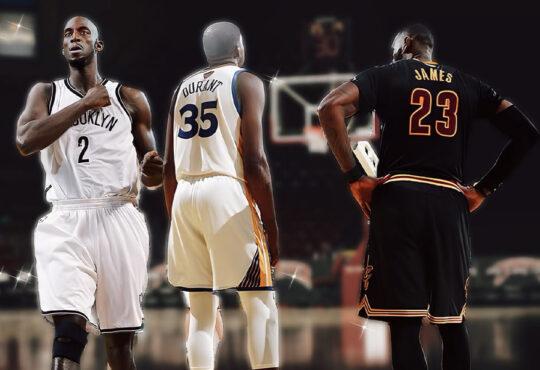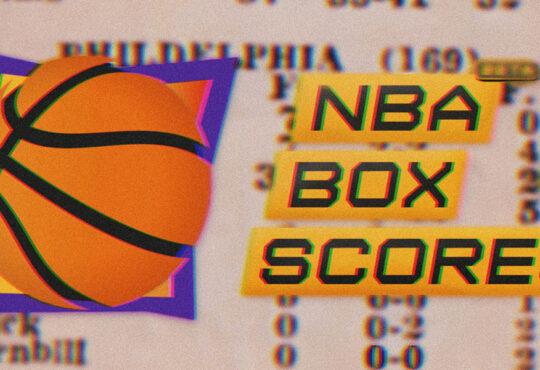
How Does The NBA Draft Work?
How Does The NBA Draft Work? Are you an NBA fan wondering what goes into the process of drafting players for a team? Whether you follow your favorite franchise religiously or are just getting started, understanding how the NBA Draft works is an essential part of being a successful basketball enthusiast. In this blog post, we’ll take a deep dive into the who, what, why, and when of one of basketball’s most important yearly events. From eligibility requirements to trade windows and more — get ready to become a pro when it comes to talking about all things related to the NBA Draft!
The NBA Draft offers teams a chance to build their future dream rosters. Each team is granted two opportunities during the draft – one for each round – allowing them exclusive rights to sign chosen players. While some franchises opt out of their picks, others can amass more by way of trades; sometimes even delivering deals involving future drafts! Whichever route they take, these conscious decisions have immense implications in building championship-caliber rosters going forward.
Draft Lottery System
As the NBA off-season approaches, fourteen teams find themselves with the potential to dramatically change their fortunes through the lottery system. These coveted spots, determined by each team’s record at the end of the season, provide an opportunity for teams to hope that luck is on their side. The lottery process involves four ping pong balls, numbered 1 through 14, being randomly chosen from a machine. The outcome of this selection can either propel a team to stardom or condemn them to failure, with only moments separating feverish anticipation from shocking heartbreak.
With a total of 1,000 possible combinations available across all participating clubs, the odds are weighted in favor of the teams that performed the worst during regular play, with 140 combinations going to the team with the worst record. This system ensures that struggling teams have a better chance of securing top talent in the upcoming draft, which can be essential for turning their fortunes around.
As draft night approaches, it is crucial for teams to be well-prepared and have a clear strategy in place. This includes conducting thorough evaluations of potential draft picks, analyzing their strengths and weaknesses, and determining how they would fit within the team’s existing roster and playing style. Additionally, teams must be ready to make quick decisions on draft night, as trades and unexpected picks can dramatically shift the landscape of the draft order.
The NBA lottery system has been the subject of much debate over the years, with some arguing that it encourages tanking or intentionally losing games, to secure better odds in the lottery. However, the excitement and unpredictability of the lottery process undoubtedly add an element of intrigue to the off-season, as fans eagerly await the results to see if their team will land a franchise-altering talent.
In conclusion, the NBA lottery system provides an opportunity for fourteen teams to potentially change their fortunes through the draft. With only 1,000 possible combinations and the odds weighted towards the teams with the worst records, the lottery process is a high-stakes event filled with anticipation and heartbreak. As draft night approaches, teams must be prepared to make the most of their lottery position, as the right pick can transform a struggling team into a championship contender.
Draft Order
Following the conclusion of the NBA lottery, teams gain clarity on their draft positions in each round. The lottery results determine the order of selection for teams, with the winning team receiving the first pick in every round. Subsequent picks are allocated based on the lottery results, with the second-place team receiving the second pick in each round, and so on.
In addition to the predetermined draft order, teams have the option to trade their picks before or during the draft. This adds an extra layer of strategy and negotiation to the draft process, as teams must weigh the potential benefits and risks of trading their picks for other assets, such as additional draft picks or established players.
For example, Team A, which won the lottery and secured the first pick in every round, might consider trading its first overall pick to Team C. In exchange, Team A could receive two second-round picks and a third-round pick from Team C. This trade scenario might be beneficial for Team A if they believe they can acquire multiple talented players in the later rounds, rather than focusing solely on the top prospect available with the first overall pick.
Conversely, Team C might be willing to part with multiple draft picks in order to secure the first overall pick, as they may have identified a specific player they believe can significantly improve their roster and change the trajectory of their franchise.
The ability to trade draft picks adds a dynamic element to the draft process, as teams must constantly evaluate their options and make strategic decisions to maximize the value of their selections. This aspect of the draft often leads to intense negotiations and unexpected moves, as teams jockey for positions to acquire the best possible talent.
In conclusion, once the NBA lottery has been completed, teams gain a clear understanding of their draft positions in each round. This knowledge, combined with the ability to trade picks, creates a complex and strategic environment during the draft. Teams must carefully assess their options and make calculated decisions to optimize their roster and improve their chances of success in the league.
Actual Drafting Process
During the actual NBA Draft, team representatives convene at a predetermined location to announce their selections from the pool of eligible players. These players include college athletes who are at least 19 years old and international players aged 22 or older. Each team is allocated 10 minutes to make its selection; if a team exceeds this time limit, it must forfeit its next selection, unless it negotiates a trade with another team for additional time.
The draft proceeds in rounds, with one round consisting of 30 selections. Once the first round is completed, the second round begins, continuing until all 60 selections have been made. The NBA Draft is a highly anticipated event that has the potential to shape the future of professional basketball, as teams acquire new talent and make strategic decisions to enhance their rosters.
The excitement surrounding the NBA Draft is fueled by the intrigue of the lottery system, the strategic maneuvering of teams during the draft process, and the anticipation of witnessing the emergence of future basketball stars. By understanding the intricacies of the draft—from the lottery system to the actual drafting process—NBA fans can derive even greater enjoyment from this annual event.
In conclusion, the NBA Draft is a thrilling tradition that captivates fans and teams alike, as it determines the fate of promising young talent and sets the stage for the future of the league. Now that you have a deeper understanding of how the lottery system works and the mechanics behind the drafting process, you can fully appreciate the excitement and drama that unfolds during this pivotal event in the world of professional basketball.





